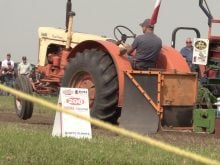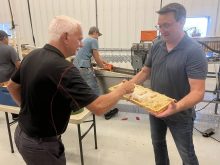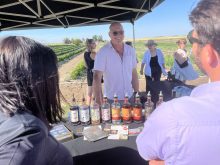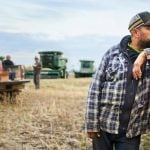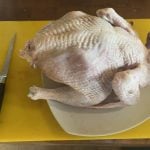WOLSELEY, Sask. Ñ Harvey MacFarlane will ring in Saskatchewan’s centennial by doing something he has been doing for half a century.
The 58-year-old Clydesdale breeder is entering three covered wagon teams in an 11-day trek from Moosomin, Sask., to Estevan, Sask., retracing the route the North West Mounted Police took in 1886 to establish a border patrol detachment.
What many would consider a big undertaking is old hat for this 20-year veteran of the chariot and chuckwagon racing circuits.
MacFarlane has been handling teams since he was an eight-year-old boy working on the family farm near Harrowby, Man.
Read Also
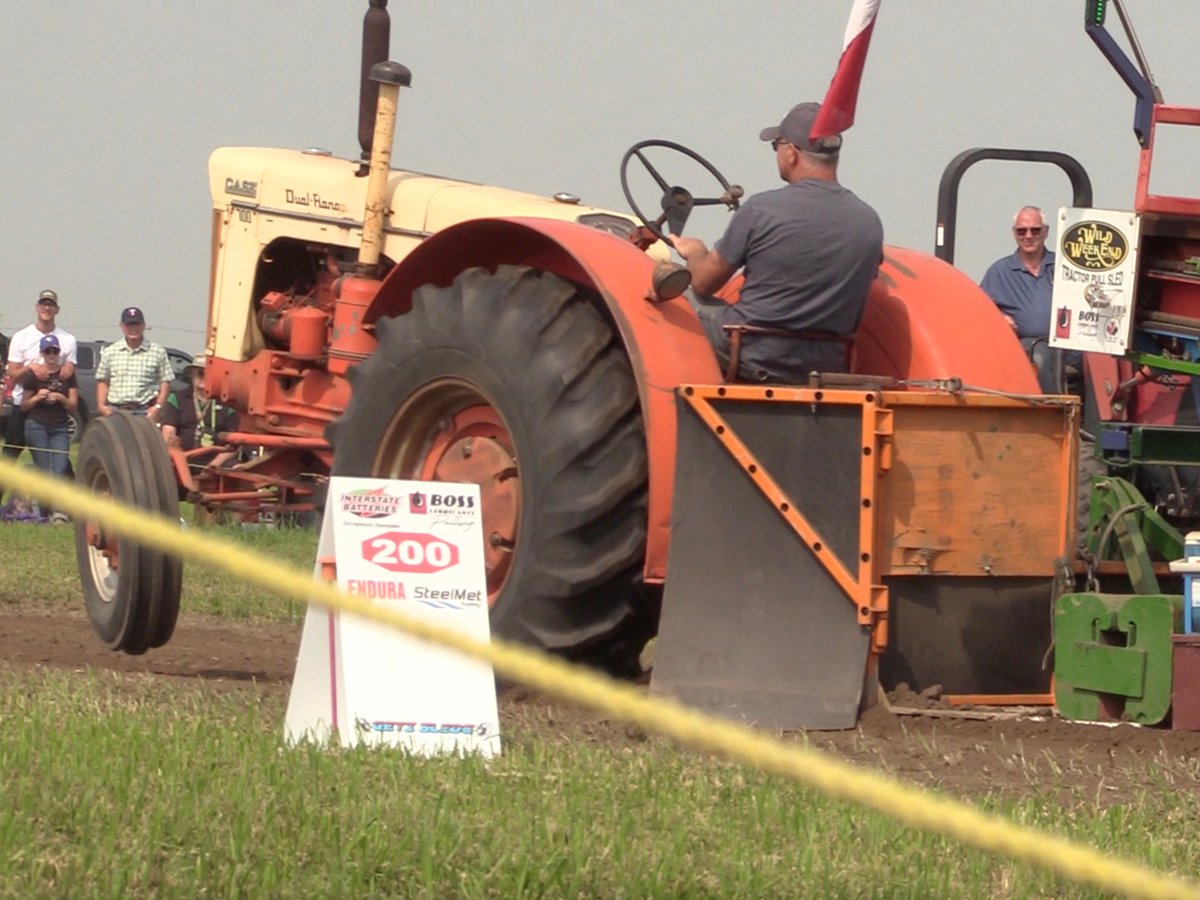
Vintage power on display at Saskatchewan tractor pull
At the Ag in Motion farm show held earlier this year near Langham, Sask., a vintage tractor pull event drew pretty significant crowds of show goers, who were mostly farmers.
“Dad said I couldn’t rake hay if I couldn’t harness a team,” said MacFarlane, during a conversation around the dining room table in the modest home he shares with his wife June in Wolseley.
After proving to his father he could handle the task, MacFarlane spent that summer earning $14 a week pulling a rake behind a two-horse team consisting of a Clydesdale-Percheron cross and a Clydesdale-Thoroughbred cross.
It was the beginning of a lifelong love affair with the animals. MacFarlane bought his first horse, a three-year-old mare, when he was in Grade 12.
“I actually sold her four different times. When people were done with her I’d buy her back and sell her again,” he said, flashing a gap-toothed grin.
That beloved mare was the start of a horse collection that at times has topped 100 animals.
Today’s tally is 45 Clydesdales, most of which are located on his seven-acre Sanguine Clydes ranch near Summerberry, Sask., a short drive from Wolseley.
He got into raising and showing Clydes in 1992, shortly after he quit the rodeo circuit after driving in an estimated 5,000 chuckwagon and chariot races through the 1970s and 1980s, setting track records from Morden, Man., to Prince Rupert, B.C.
“We started at the end of April and I didn’t come home much until September.”
During his 20 years at the tracks MacFarlane trained nine rookie drivers. He allowed his crew to keep the prize money while he held onto the sponsorship dollars.
Aside from one glass etching hanging over his living room sofa, his house is surprisingly devoid of visible mementos from those days. He gave all his trophies away to the car dealers, variety stores and concrete plants that bought advertising on the sides of his chariots and chuckwagons.
MacFarlane augmented his track income by working as a farrier or Thoroughbred trainer in the summer and selling insurance or insulation or working the oil rigs in the winter.
“It kept the wolf back from the door,” he said, pulling out a pack of matches from the torn pocket of his powder blue cowboy shirt and lighting up a cigarette.
His two children, both from his first marriage, have inherited MacFarlane’s love of horses.
His son, who was a rookie chuckwagon champion at age 16, now works as a farrier in Regina. His daughter, Alberta’s first female chuckwagon competitor, won the province’s chariot championship in her third year of racing.
These days MacFarlane spends most of his time tending to his herd of Clydes.
Some of the animals are sold, some of them are rented to neighbours and others are put to work around the acreage, performing most of the tasks a tractor can do.
“The average horse doesn’t get enough work now. There are so few people who even realize what a horse can do,” he said.
Searching for the right words to describe his unbridled love of horses, MacFarlane takes a cupped hand and runs it back and forth across his smooth bald head.
What he lacks up top he makes up for in a pair of bushy eyebrows, a thick handlebar moustache and a healthy crop of curly grey chest hair exposed by his partially unbuttoned shirt.
Instead of coming up with one succinct sentence, he launches into a series of stories demonstrating the intelligence of these 800-kilogram beasts of burden.
He talks about his first Clyde mare that knew exactly how much energy to exert.
“You’d hook her up in the field and she’d pull three times what she’d pull at the barn. You’d hook her up for skidding logs and she’d pull three times what she’d pull in the field.”
He speaks of a temperamental racehorse that wouldn’t run until it had announced itself to the crowd with a whinny, about a Clyde he taught to use a rope to pull a bale of hay out into the pasture and of a mare that wouldn’t foal without MacFarlane standing by its side.
“When you work with a horse with that much intelligence you develop a bond with them.”
This year MacFarlane is embarking on a new adventure with his equine buddies. He plans to do at least three wagon treks during the summer.
It’s a moneymaking venture but MacFarlane also considers it an opportunity to pass along some of his horse sense to a captive audience.
Guests will be charged $150-$190 per day to ride in a modern version of the old Conestoga prairie schooner. The wagons are equipped with padded seats, wide aisles, roll-up canvas sides and one other luxury the pioneers never had.
“We’re using rubber tires because people aren’t used to bouncing across the country anymore.”
The first trek departs on May 30, averaging an estimated 20 kilometres a day, which is nothing for a guy who once rode 80 km a day chasing wild horses in the foothills west of Sundre, Alta.
While he’s nearing retirement age, MacFarlane shows no signs of slowing down. In addition to the treks he’ll be harnessing a six-horse team for a graduation in Estevan, a wedding in Balgonie, Sask., and a number of shows across the Prairies.
“They say the first 50 years are the toughest. I’m going to keep doing it for a while to see if it gets easier,” he said.





